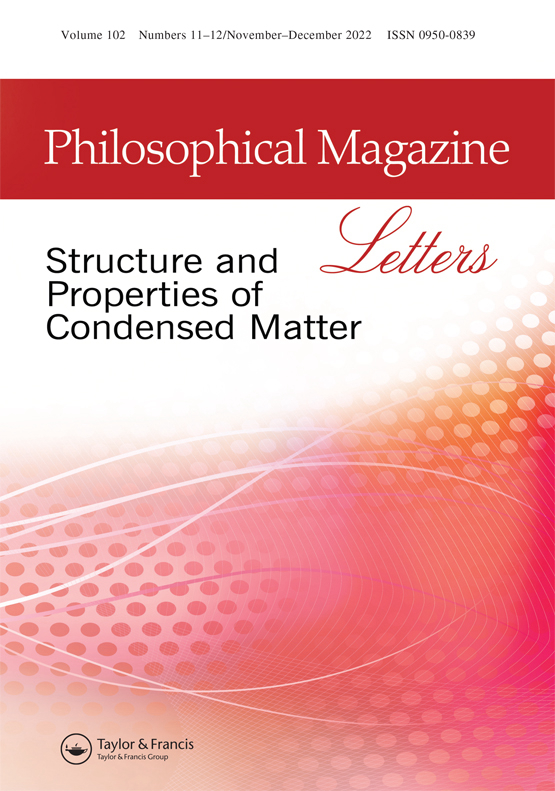Submit a Manuscript to the Journal
Philosophical Magazine Letters
For an Article Collection on
Metal/Inorganic-Compound (M/IC) Interfaces/Heterojunctions for Technological Applications
Manuscript deadline


Article collection guest advisor(s)
Dr. Changming Fang,
Brunel University London, UK
changming.fang@brunel.ac.uk
Metal/Inorganic-Compound (M/IC) Interfaces/Heterojunctions for Technological Applications
When metallic atoms are deposited on an inorganic substrate, they form a metal/inorganic-compound (M/IC) interface which is also referred to as a heterojunction. Such M/IC interfaces play a crucial role in many manufacturing processes, including heterogenous nucleation during casting of metals and alloys, catalysis of chemical reactions. Moreover, the addition of inorganic materials, such as graphene, SiC, oxides, etc. into light metals produces metal matrix composites (MMCs) which exhibit excellent mechanical performances and chemical resistances to unfriendly environments. The M/IC interface interactions determine the wetting and strengths of the MMCs. Furthermore, Metal/Semiconductor (M/S) heterojunctions are key to photon detection, photovoltaics, as well as Schottky diodes in semiconductor industry for long. To achieve better understanding about the working mechanisms of the M/IC including M/S interfaces/heterojunctions, knowledge about the local structures and chemical interactions is essential for development and designing of new heterojunctions for technological applications to meet the fast-changing demands of society.
Recent progress in both experimental techniques and atomic modelling methods have given rise to new opportunities in the creation of new M/IC heterojunction devices for various applications and investigate their local structures, interfacial chemical interactions and electronic properties.
This Article Collection intends to include but not be limited to the following subtopics:
- Interfaces between metal and inorganic compounds including graphene, oxides, nitrides, carbides, borides, aluminides, etc. The inorganic substrates act as grain-refiners for solidification of metals and alloys.
- Metal/semiconductor heterojunctions and their applications in the fields of photon detection, photovoltaics, etc.
- Metal/Semiconductor interfaces or heterojunction for applications in semiconductor industry, as Schottky diodes, semiconductor devices, etc.
- Two-dimensional (2D) M/IC interfaces of van der Waals interactions.
- Local structural and chemical interactions between the metal and inorganic substrates, and the mechanisms explaining the observed phenomena.
All manuscripts submitted to this Article Collection will undergo desk assessment and peer-review as part of our standard editorial process. Guest Advisors will not be involved in peer-reviewing manuscripts unless they are an existing member of the Editorial Board.
Please review the journal scope and author submission instructions prior to submitting a manuscript.
The deadline for submitting manuscripts is 23 March 2026.
Please contact Agnes Zhou at Agnes.Zhou@taylorandfrancis.com with any queries regarding this Article Collection.
For Taylor and Francis Journals: Please be sure to select the appropriate Article Collection from the drop-down menu in the submission system.
Benefits of publishing open access within Taylor & Francis
Global marketing and publicity, ensuring your research reaches the people you want it to.
Article Collections bring together the latest research on hot topics from influential researchers across the globe.
Rigorous peer review for every open access article.
Rapid online publication allowing you to share your work quickly.
Submission Instructions
All manuscripts submitted to this Article Collection will undergo desk assessment and peer-review as part of our standard editorial process. Guest Advisors for this collection will not be involved in peer-reviewing manuscripts unless they are an existing member of the Editorial Board. Please review the journal Aims and Scope and author submission instructions prior to submitting a manuscript.
